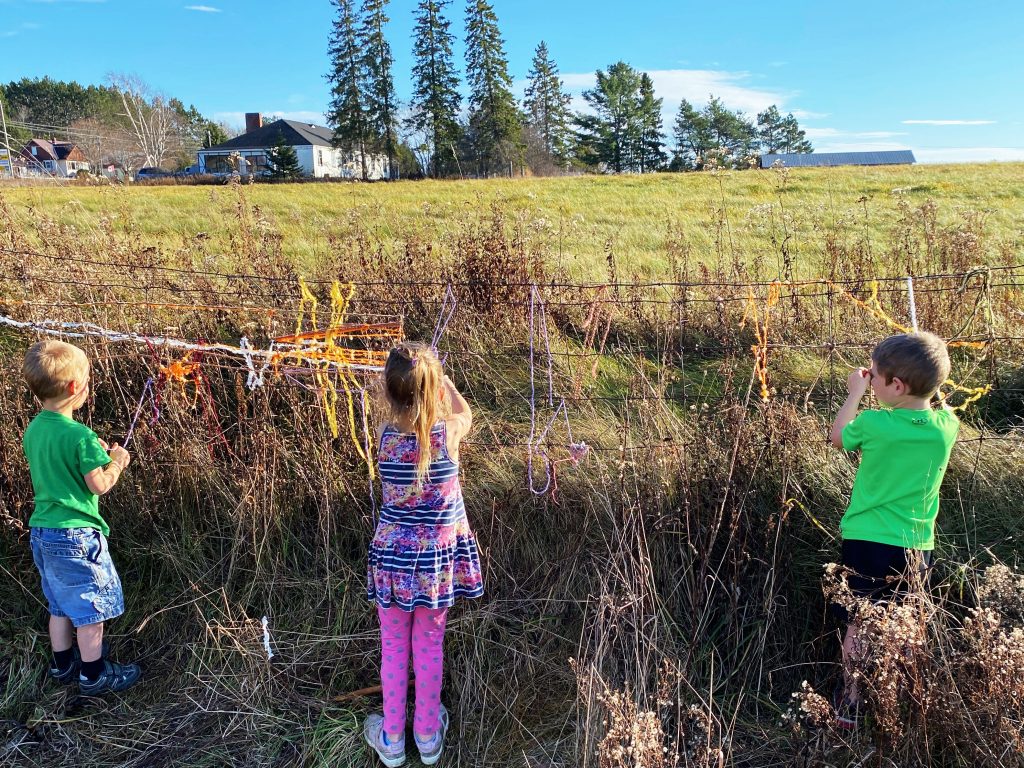Since the beginning of COVID-19, schools and classrooms have changed, but learning has not. In fact, schools have incorporated more outdoor learning.
Argyle Public School is one of the many schools within Near North District School Board that is learning outdoors. The onset of COVID-19 has brought some positive changes to the Kindergarten (ELKP) classroom and its educators Sonja Cudmore and Robyn Ramsay who are excited to see students embracing the outdoors.
NNDSB’s philosophy is to offer students a rich learning experience in both the classroom and beyond. Outdoor education brings learning to life with increased opportunities to advance curricular learning in real-world, authentic contexts. NNDSB engages in outdoor education in all seasons, to deliver interdisciplinary outdoor learning opportunities k-12.
“Students are practicing social distancing, so we thought it was appropriate to spend more time learning in our natural classroom,” stated Cudmore, who noted their schoolyard is a beautiful space for an outdoor classroom; surrounded by farmer’s fields, bushes, and a small pond. “We bring the learning outside by going on scavenger hunts, nature walks, outside math and science. Nearly every subject has connections to learning outside.”
Students even had the chance to go on a pumpkin hunt in the playground, decorating their found pumpkins, and ultimately learning about the lifecycle of a pumpkin. The learning doesn’t stop there. In fact, that’s just the beginning. Students have the opportunity to investigate various common spiders and their webs, which they became fascinated with. Using yarn and other materials, students created their own webs on the school fence to learn about the techniques used in web creation.
Playing outside allows students the freedom to move and explore their environment and make investigations about their world. “Our students have really enjoyed observing nature in our schoolyard,” said Cudmore who noted students have noticed an abundance of Woolly Bear Caterpillars and began to ask questions about them. “They wondered why butterflies lay eggs which led to a discussion on the lifecycle of butterflies. We kept track of the number of caterpillars we spotted each week using 10-frames and tallies and then created a pictograph to display the data.”
She added by November, students observed there were fewer caterpillars, but more chrysalises, which began a discussion on why that might be. Since that discussion, teachers read several books to the students, which helped everyone understand the changes they were seeing.
Students look forward to taking their learning outdoors and investigating the world around them,” said Ramsay, “The outdoors provides the perfect environment for students to explore their wonderings about nature.”
